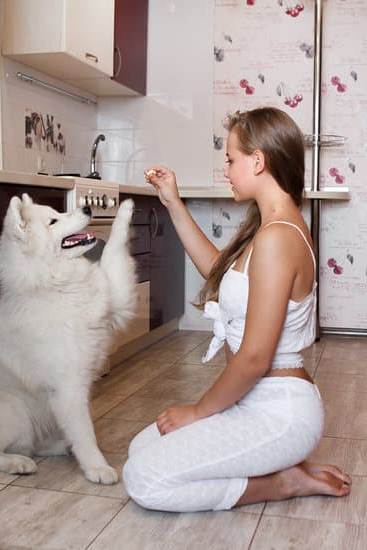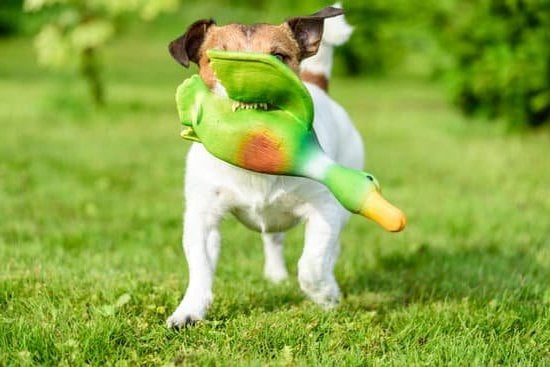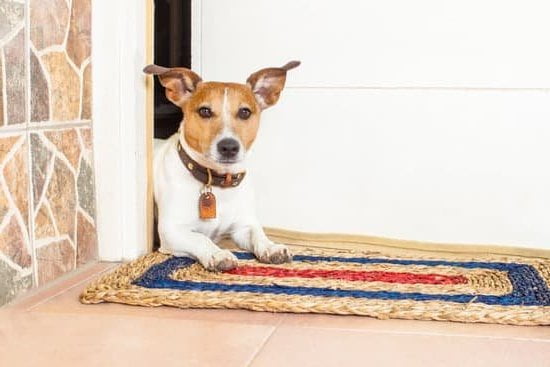Training a pad trained dog to go outside can be a challenging but rewarding process. If you have relied on indoor potty pads for your dog’s bathroom needs, transitioning to outdoor potty training requires patience, consistency, and understanding of your dog’s behavior. In this article, we will explore the steps and strategies for successfully training a pad trained dog to go outside for potty breaks.
The first step in transitioning from indoor potty pads to outdoor potty training is understanding the pad training process. This involves recognizing the cues and signals that your dog exhibits when they need to go potty, as well as establishing a routine for using the indoor potty pads. Understanding this process is essential for successfully transitioning your dog to go outside for their bathroom needs.
Once you have a grasp of the pad training process, the next step is establishing a new routine for outdoor potty breaks. This involves taking your dog outside at specific times of the day and creating a designated potty spot.
Consistency is key during this transition period, as it helps your dog understand that going outside is now the new norm for relieving themselves. By following this process, you can effectively train your pad trained dog to go outside for their bathroom needs.
Transitioning From Indoor Potty Pads to Outdoor Potty
Understanding the Transition Process
Transitioning a pad trained dog to go outside can be a challenging process, but with the right approach and patience, it can be successfully accomplished. It’s important to understand that this transition may take some time and consistency in training is key.
Establishing a New Routine
One of the first steps in transitioning your pad trained dog to go outside is to establish a new potty routine. Take your dog outside at regular intervals, such as after meals, first thing in the morning, and before bedtime. By maintaining a consistent schedule, you can help your dog adjust to the new routine and understand that outdoor potty breaks are now the norm.
Using Positive Reinforcement
Using positive reinforcement is crucial when training your dog to go potty outside. When your dog successfully goes potty outdoors, praise them and offer treats as a reward. This will reinforce the desired behavior and encourage your dog to continue going potty outside. Additionally, avoid scolding or punishing your dog for accidents during the training process as this can create stress and anxiety around pottying. Instead, focus on rewarding good behavior and being patient with any setbacks that may occur.
By following these steps and guidelines on how to train a pad trained dog to go outside, you can effectively transition your pet from indoor potty pads to outdoor pottying with patience and consistency.
Establishing a New Routine for Outdoor Potty Breaks
Start by taking your dog outside first thing in the morning, right before bed, and after meals. These are typically times when dogs need to relieve themselves. When you take your dog outside, choose a designated spot where you want them to potty. This will help your dog understand where they should go and minimize confusion.
It’s important to give your dog plenty of time to sniff around and find the perfect spot to do their business. Be patient during this process, as it may take some time for them to adjust to the new routine. Remember to use positive reinforcement when your dog successfully goes potty outside. This can include verbal praise, treats, or even playtime as a reward for good behavior.
| Outdoor Potty Spot Essentials | Description |
|---|---|
| Grass or gravel area | Choose an area with a substrate similar to the indoor potty pads your dog is used to. |
| Shelter from the elements | Provide some cover or shade in case of inclement weather. |
| Clean-up supplies | Keep bags or a scooper nearby for quick clean-up after your dog goes potty. |
Using Positive Reinforcement to Encourage Outdoor Potty Behavior
Understanding the Importance of Positive Reinforcement
Positive reinforcement is a key aspect of training any dog, especially when it comes to transitioning from pad training to outdoor potty behavior. This method involves rewarding your dog for exhibiting the desired behavior, in this case, going potty outside. By using treats, verbal praise, or affection, you can encourage your dog to repeat the behavior and associate going outside with a positive experience.
Implementing a Reward System
When transitioning a pad trained dog to go outside, it’s important to have a consistent reward system in place. Every time your dog successfully goes potty outside, immediately reward them with treats and praise. This will help them understand that going outside to relieve themselves is the right behavior and will be met with positive reinforcement.
Consistency Is Key
Consistency is crucial when using positive reinforcement to encourage outdoor potty behavior in pad trained dogs. Make sure that everyone in the household is on board with the training process and follows the same reward system. Additionally, be patient and persistent with the rewards, as it may take some time for your dog to fully grasp the concept of going potty outside instead of on indoor pads.
By understanding the importance of positive reinforcement, implementing a consistent reward system, and being patient and persistent with your training efforts, you can effectively train a pad trained dog to go outside for their potty needs. With time and dedication, your furry friend will successfully make the transition from indoor pads to outdoor potty behavior.
Understanding Your Dog’s Body Language and Signals for Potty Needs
When it comes to transitioning a pad trained dog to go outside, it’s important to understand your dog’s body language and signals for when they need to go potty. By recognizing these cues, you can effectively train your dog to do their business outdoors.
Here are some common body language and signals that indicate your dog needs to relieve themselves:
- Restlessness or pacing: If you notice your dog pacing or appearing restless, it could be a sign that they need to go potty.
- Sniffing the ground: Dogs have a natural instinct to sniff around before going potty. If you notice your dog repeatedly sniffing the ground in a specific area, they may be looking for a spot to relieve themselves.
- Whining or scratching at the door: Some dogs may communicate their need to go outside by whining or scratching at the door. It’s important to pay attention to these cues and respond promptly.
In addition to body language, it’s crucial to establish a routine for outdoor potty breaks. Take note of how often your dog typically needs to go potty and create a schedule around those times. Consistency is key when transitioning from indoor potty pads to outdoor potty, so be sure to take your dog outside at regular intervals throughout the day.
By understanding your dog’s body language and establishing a consistent routine for outdoor potty breaks, you can effectively train your pad trained dog to go outside. Remember that patience and positive reinforcement are essential during this process.
Dealing With Setbacks and Accidents During the Training Process
Training a pad trained dog to go outside can be a challenging process, and setbacks and accidents are bound to happen. It’s important to remember that this is a normal part of the training process, and staying patient and consistent is crucial. When accidents occur, it’s essential to remain calm and refrain from punishing your dog. Instead, focus on reinforcing positive behavior when your dog does go potty outside.
One of the most common setbacks during the transition from indoor potty pads to outdoor potty is regression in behavior. Your dog may have accidents indoors even after making progress with outdoor potty training. This can be frustrating, but it’s important not to get discouraged. Instead, revisit the basics of outdoor potty training by taking your dog out frequently and using positive reinforcement when they go potty outside.
Another setback you may encounter during this process is resistance from your dog to go outside for potty breaks. Some pad trained dogs may feel uncomfortable or unsure about going potty in an unfamiliar outdoor environment. In this case, it’s essential to create a comfortable and inviting outdoor potty spot for your dog. Making this area appealing with familiar scents or toys can help encourage your dog to go outside.
Understanding that setbacks are a natural part of training will help you approach them with patience and understanding. Consistency is key, so continue providing positive reinforcement for desired behavior, staying calm during accidents, and being persistent in establishing a new routine for outdoor potty breaks.
| Common Setbacks | How to Address Them |
|---|---|
| Regression in behavior | Revisit basics of outdoor potty training, use positive reinforcement |
| Resistance from dog to go outside | Create comfortable and inviting outdoor potty spot |
Tips for Creating a Comfortable Outdoor Potty Spot for Your Dog
Creating a comfortable outdoor potty spot for your dog is essential when transitioning from pad training to outdoor potty breaks. Here are some tips to make this transition as smooth as possible for your furry friend:
- Find a suitable spot: Choose an area in your yard that is easily accessible for your dog and away from high-traffic areas. This will provide them with a sense of privacy and safety while doing their business.
- Provide proper drainage: Ensure that the chosen outdoor potty spot has good drainage to prevent puddles from forming. You can use gravel or sand to help with absorption and keep the area clean.
- Add familiar scents: If your dog is having trouble adjusting to their new outdoor potty spot, you can sprinkle some used indoor potty pads or a small amount of their waste in the area. The familiar scent will reassure them that it’s an appropriate place to go.
- Consider landscaping: Some dogs may prefer to have a defined space for eliminating. You can use landscaping elements such as border plants or decorative fencing to create a designated potty area within the yard.
It’s important to remember that transitioning from pad trained dog to going outside may take some time and patience, but providing a comfortable outdoor potty spot is one step towards successfully completing this process. Making sure the area is suitable for your dog’s needs will encourage them to eliminate outdoors more consistently.
Patience and Consistency
In conclusion, transitioning a pad trained dog to go outside for potty breaks requires patience and consistency. Understanding the pad training process is essential, as it helps to comprehend your dog’s habits and preferences. This knowledge can be used to gradually transition them from indoor potty pads to outdoor potty sessions.
Establishing a new routine for outdoor potty breaks is crucial in this process. By setting regular times for your dog to go outside, they will begin to understand when and where they should relieve themselves. Using positive reinforcement, such as treats and praise, can encourage the desired behavior of going potty outside. It’s important to remember that setbacks and accidents may occur during the training process, but staying patient and consistent will ultimately lead to success.
Finally, creating a comfortable outdoor potty spot for your dog can make the transition easier. Pay attention to your dog’s body language and signals for potty needs, as this will help you anticipate when they need to go out. By following these steps with patience and consistency, you can effectively train a pad trained dog to go outside for their potty breaks.
Frequently Asked Questions
How Do I Transition My Dog From Pee Pad to Outside?
Transitioning your dog from using pee pads to going outside requires patience and consistency. Start by gradually moving the pee pad closer to the door, then eventually outside. Reward your dog when they successfully go outside to reinforce the behavior.
Can a Dog Be Pad Trained and Outside Trained?
Yes, a dog can be pad trained for times when they can’t go outside, such as in extreme weather, and also trained to go outside when it’s possible. It’s important to establish routines and signals for both options so your dog understands when and where to go.
How Do I Retrain My Dog to Use a Pee Pad?
If you need to retrain your dog to use a pee pad, start by placing the pad in a designated area and guiding your dog there frequently. Use positive reinforcement like treats or praise when they use the pad correctly. Consistency and patience are key in retraining your dog on pee pad usage.

Welcome to the blog! I am a professional dog trainer and have been working with dogs for many years. In this blog, I will be discussing various topics related to dog training, including tips, tricks, and advice. I hope you find this information helpful and informative. Thanks for reading!





